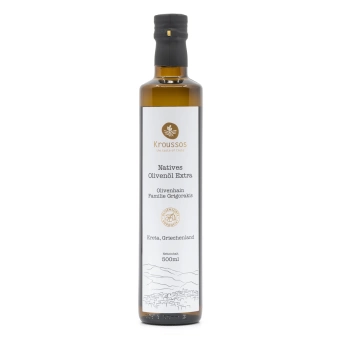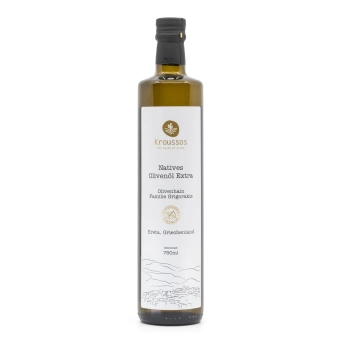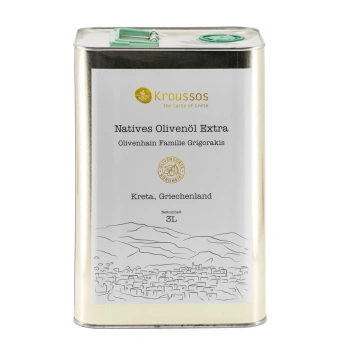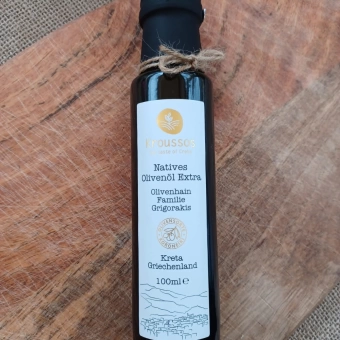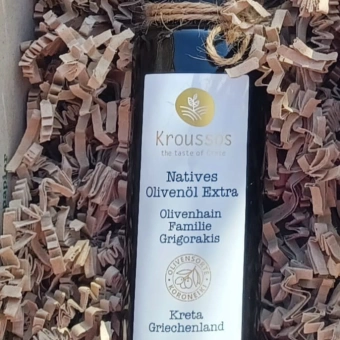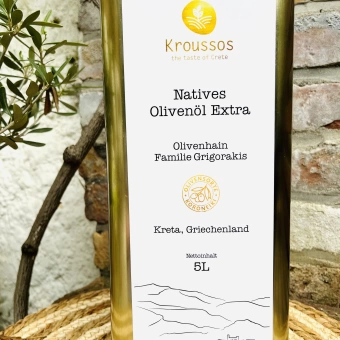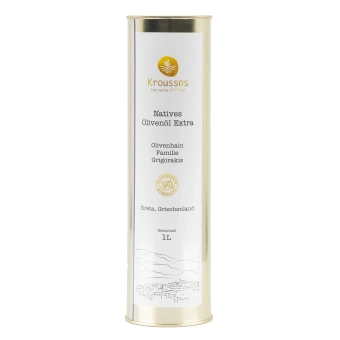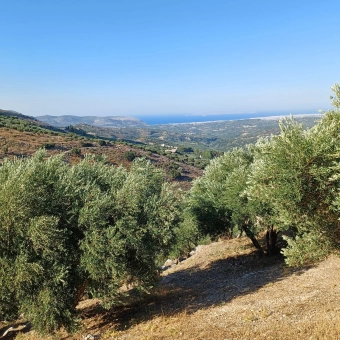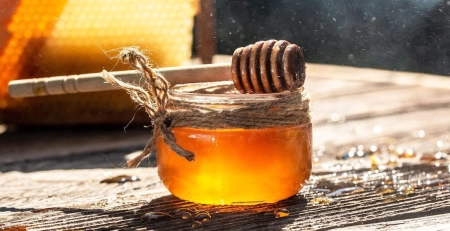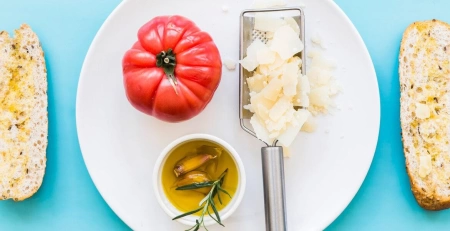Crete and its olive oil
Crete, the most important location in the history of the olive tree
The beginning of the cultivation of the olive tree is placed in the period of the early Bronze Age, i.e. about 3000 BC.
Crete was perhaps the most important and influential location for the spread of the olive tree. The Minoans, known as capable seafarers, learned about the usefulness of olives from the peoples of the eastern Mediterranean and brought the olive tree to Crete. In its mild climate with fertile soil, where one of the greatest cultures in the world was growing, the olive found its island…. It blossomed and bore fruit from which the precious olive oil was extracted. Nowhere else was this tree so revered.
The unique archaeological finds exhibited in the local museums, such as the stone presses, the clay jars for storing olive oil, the oil lamps, the pictorial representations of the whole tree or individual branches on clay vessels or sarcophagi, and especially in representations of religious ceremonies, prove that the olive tree occupied an important position in the religious as well as in the social life of the Minoans. A complete, cone-shaped cup filled with olives was found in the Minoan palace of Zakros. (…)
Olive oil in the diet of the Cretans
For centuries, the peoples of Europe and America have used almost only animal fats, such as butter and pork fat, in their diet, unlike the Cretans who knew only olive oil.
When the Englishman Robert Pashley visited Crete on one of his journeys in the middle of the 19th century, he recorded the following in his notes – amazed at the large consumption of olive oil: “I am told here, but also everywhere I have asked, that every Cretan family consumes at least 5 kg of olive oil per week. (…)
Olive oil is used for all kinds of vegetables and also for preparing meat and fish. In short, it is found in every Cretan meal, and although all Greeks eat a lot of olive oil, consumption on this island is much greater than elsewhere.”
Scientific confirmation
Almost a century later, the American Rockefeller Institute conducted an exemplary study among the population of Crete at that time between 1948-1957 and found the following: The Cretan diet consists mainly of foods of vegetable origin, such as cereals, vegetables, fruits and olive oil….
Olives and olive oil contribute a lot to the vitality of the organism. A stranger gets the impression that the meals of the Cretans are swimming in olive oil.
Source: Lambraki, Myrsini (1999): Olivenöl. Besser essen, länger leben, Heraklion-Kreta, Griechenland.
